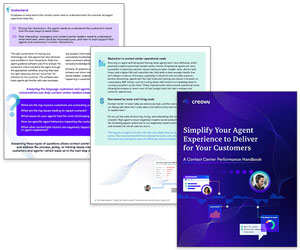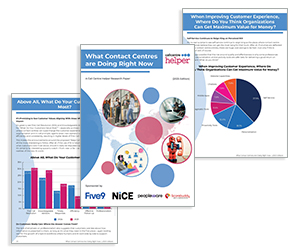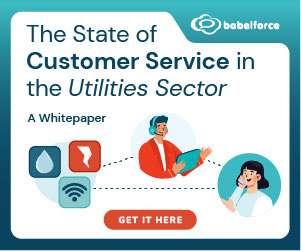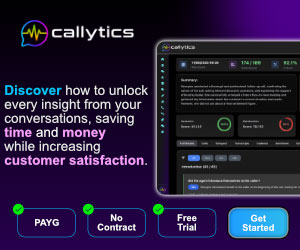Trust is the foundation of great service. When a customer picks up the phone, they want to feel confident that they’re in good hands. If they trust you, they’ll listen, cooperate, and remain loyal to the brand. If they don’t? Every interaction will feel like a battle!
It’s not just about answering questions – it’s about creating a reliable, human, and helpful experience… And recognizing that your agents have the power to make or break that trust in every conversation.
So, without further ado, here are the 10 building blocks to earning (and keeping) customer trust:
How to Build and Maintain Customer Trust
1. Make Sure Your Agents Really Know Their Stuff
Customers trust agents who sound confident and knowledgeable. If an agent hesitates or gives vague answers, the customer will start doubting them.
How can agents achieve this?
- Stay updated on company policies, products, and troubleshooting steps.
- Use internal knowledge bases and tools to find answers quickly.
- If they need help, don’t guess – escalate or transfer to the right department.
- Use ongoing training portals like LinkedIn Learning to provide continuous training.
- Provide real-time prompts to help agents answer questions accurately using AI-powered assistants.
- Provide an easily searchable database to ensure agents have the right information at their fingertips.
If you are looking for more ways to improve your agents’ skills, read our article: The 6 Steps to More Competent Agents
2. Protect Customers’ Personal Information Like It’s Your Own
Customers need to trust that their personal data is safe. One mistake with security, and trust is gone.
How can agents achieve this?
- Always verify customer identity before accessing their account.
- Never share personal details or passwords over the phone.
- Follow company security protocols – no shortcuts!
- Require customers to verify their identity using multi-factor authentication (MFA) before accessing sensitive information.
- Use secure call recording systems to store or encrypt interactions safely.
3. Always Do What You Say You’re Going to Do
Make sure customers feel like they can count on your team to do what they said they would. If customers feel like they can’t rely on your agents to follow through, they’ll lose faith in the entire company.
How can agents achieve this?
- Use a CRM platform to schedule callbacks and send automated reminders for unresolved issues.
- Use “warm transfers”, where you brief the next agent before transferring, instead of cold transfers.
- Ensure every customer issue is logged and updated with ticket tracking software, so no request falls through the cracks.
- Follow up on unresolved issues – don’t make them chase you.
- Call back when promised. Never leave a customer hanging.
- If transferring a call, explain why and ensure a smooth handover. (Or better still, improve your processes to reduce the need for call transfers.)
4. Train Agents NOT to Interrupt or Rush the Conversation
Customers trust agents who understand and acknowledge their feelings. If they feel dismissed, they’ll assume they don’t care.
How can agents achieve this?
- Listen actively – don’t interrupt or rush the conversation. Use empathetic phrases like, “I understand how frustrating this must be.”
- Match their tone – if they’re upset, be calm and reassuring. If they’re happy, engage with warmth.
- Use AI sentiment analysis software that detects frustration or distress in a customer’s voice and alerts you to adjust your tone.
- Label interactions based on emotional tone with ‘customer emotion tags’ to provide better service in follow-ups.
- Use active listening tools for real-time coaching tools that remind agents to pause, listen, and respond empathetically.
5. If Agents Don’t Know an Answer, Make Sure They Admit It (Instead of Improvising on the Spot!)
Customers trust agents who are upfront about what’s happening, so transparency is essential. If they feel misled or kept in the dark, frustration sets in.
How can agents achieve this?
- Clearly explain any fees, wait times, or steps involved in their request.
- If you don’t know an answer, admit it – then find out and go back to the customer.
- Set realistic expectations. If a resolution takes five days, don’t promise two.
- Create a knowledge base and use other tools to access accurate, up-to-date information quickly.
- If an issue requires follow-up, use automated email and SMS systems to send real-time updates.
6. Try Not to Leave Customers Waiting Too Long for Someone to Answer the Phone
If customers feel like they have to wait forever for help, trust fades. Fast, effective responses show your team are reliable.
How can agents achieve this?
- Minimize hold times and check back often if you need to place the customer on hold.
- Answer questions directly to avoid unnecessary back-and-forth.
- Use callbacks or follow-up emails instead of making them call again.
- Automate common enquiries to free up agents for more complex issues using AI chatbots & IVR systems.
- Use real-time performance dashboards help to monitor hold times and response times to keep service levels high.
- Ensure customers can reach you through omnichannel support such as phone, chat, email, or social media without long delays.
How Long Really Is “Too Long” for a Customer to Wait?
For a benchmark of how long really is “too long”, take a look at our latest research findings about “On average, how long do your callers wait before abandoning” – as taken from our What Contact Centres Are Doing Right Now report:
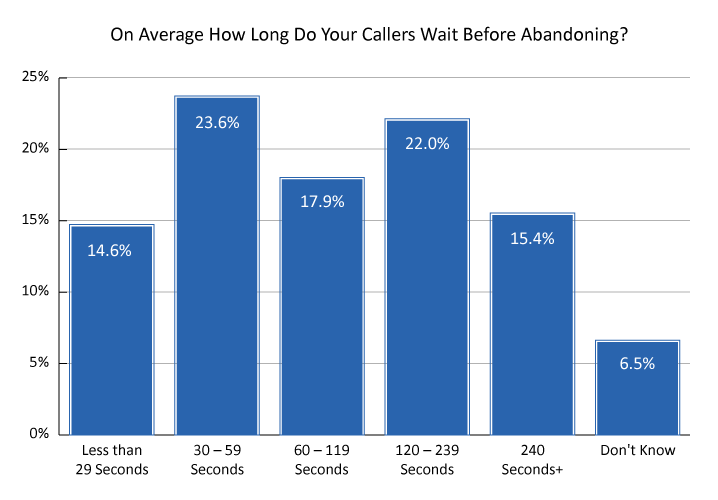
7. Commit to Continuous Improvement
Customers trust companies that share their values – whether that’s integrity, fairness, or excellent service.
How can agents achieve this?
- Reinforce company values in your interactions (e.g. “Our company believes in fairness, so let’s find a solution that works for you.”)
- Show commitment to customer satisfaction, not just closing cases.
- Share customer success stories internally to inspire better service.
- Advocate for customers internally! If multiple customers report the same issue, suggest operational changes to leadership so that processes can be improved.
8. Deliver the Same Great Service – From Every Agent, Every Time
Consistency is king! If one agent is helpful and another isn’t, trust in the whole company erodes. Customers want to know they’ll always get the same level of support.
How can agents achieve this?
- Follow best practices and company processes so customers get consistent information – whoever they speak to.
- Document customer interactions properly, so others can pick up where you left off. Note, AI-powered auto call summaries are now available from several leading vendors to support this.
- Always confirm resolution steps before ending a call to ensure no details are missed.
- Create standard operating procedures (SOPs) to ensure that all agents follow a structured workflow for common issues.
- Use sentiment analysis and AI-powered call monitoring tools to track and standardize customer interactions.
- Use unified CRM systems to ensure all customer data is updated in real time so the next agent has full context if the customer calls back.
9. Always Be Real, Not Robotic
Customers can tell when agents are reading from a script. If they sound forced or uninterested, trust disappears. People connect with people, after all.
How can agents achieve this?
- Personalize each call by using the customer’s name and acknowledging their situation.
- Speak naturally, don’t sound like you’re just reciting policy.
- Smile when you talk to add warmth to your conversations (yes, they can hear it!).
- Use AI-powered call scripts that adjust based on customer responses, ensuring conversations feel natural.
- Lean into your CRM’s customer history, allowing you to personalize interactions.
10. Let Your Customers Do (Some of) the Hard Work for You
People trust real success stories. If other customers have had great experiences, new ones will have more confidence in you.
How can agents achieve this?
- Reference past resolutions in conversation, e.g. “We’ve helped other customers with this exact issue this week.”
- Take advantage of any opportunities to share examples of your company’s positive reputation – when relevant.
- Encourage satisfied customers to leave positive feedback.
- Send quick SMS or email surveys after calls to collect customer feedback.
- Use platforms like Trustpilot to showcase positive customer testimonials.
Customer Trust Is Built in Every Call
Every time you pick up the phone, you have an opportunity to strengthen customer trust. It’s not about one big moment – it’s about consistently showing up with honesty, reliability, and empathy.
So, master these 10 building blocks, and you won’t just lead “another contact centre team” – you’ll be a team your customers trust, rely on, and even look forward to speaking with.
If you are looking for more great information on developing relationships with customers, read these articles next:
- 15 Hacks to Reduce Customer Uncertainty
- Capture Customer Needs – Just Like This!
- 21 Tips to Make Your Customers Feel Truly Valued
Author: Stephanie Lennox
Reviewed by: Xander Freeman
Published On: 21st May 2025 - Last modified: 13th Nov 2025
Read more about - Customer Service Strategy, Communication Skills, Customer Experience (CX), Customer Relationship Management (CRM), Customer Service, Service Strategy, Stephanie Lennox, Top Story













